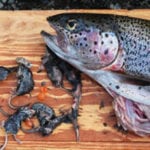 Mysteries
Mysteries  Mysteries
Mysteries  Creepy
Creepy 10 Scary Tales from the Middle Ages That’ll Keep You up at Night
 Humans
Humans 10 One-of-a-kind People the World Said Goodbye to in July 2024
 Movies and TV
Movies and TV 10 Holiday Movies Released at Odd Times of the Year
 Politics
Politics 10 Countries Where Religion and Politics Are Inseparable
 Weird Stuff
Weird Stuff 10 Freaky Times When Famous Body Parts Were Stolen
 Miscellaneous
Miscellaneous 10 Interesting Things Manufacturers Stopped Making and Why
 Gaming
Gaming 10 Funny Tutorials in Games
 History
History 10 Fascinating Little-Known Events in Mexican History
 Facts
Facts 10 Things You May Not Know about the Statue of Liberty
 Mysteries
Mysteries 10 Devastating Missing Child Cases That Remain Unsolved
 Creepy
Creepy 10 Scary Tales from the Middle Ages That’ll Keep You up at Night
 Humans
Humans 10 One-of-a-kind People the World Said Goodbye to in July 2024
Who's Behind Listverse?

Jamie Frater
Head Editor
Jamie founded Listverse due to an insatiable desire to share fascinating, obscure, and bizarre facts. He has been a guest speaker on numerous national radio and television stations and is a five time published author.
More About Us Movies and TV
Movies and TV 10 Holiday Movies Released at Odd Times of the Year
 Politics
Politics 10 Countries Where Religion and Politics Are Inseparable
 Weird Stuff
Weird Stuff 10 Freaky Times When Famous Body Parts Were Stolen
 Miscellaneous
Miscellaneous 10 Interesting Things Manufacturers Stopped Making and Why
 Gaming
Gaming 10 Funny Tutorials in Games
 History
History 10 Fascinating Little-Known Events in Mexican History
 Facts
Facts 10 Things You May Not Know about the Statue of Liberty
10 Animals With Amazing Super Skin
One of the most important organs of the body is also one of the most overlooked and abused: the skin. Seldom do we stop to consider the vital fleshy sheath that holds in all of our squishy organs and fluids. Skin is like the tortilla that keeps our enchilada filling from running everywhere. Skin is part of the “integumentary system,” which also includes hair, fingernails, feathers, hooves, etc.
It keeps us safe from parasites and microscopic invaders while also giving us a marvelous tactile sense of the world around us. Across the animal kingdom, skins come in all shapes, sizes and flavors (narwhal skin has as much vitamin C as an orange). But a few are so amazing that they qualify as outright super powers.
10 Crocodiles Can Feel You Swimming

Crocodilians are a tough, ornery bunch. And they’ve got the armor and weapons to back up their bad mood. Their skin is legendary for its toughness and is still sought after today for boots and clothing. It is also unexpectedly sensitive. Besides possessing one of the toughest hides on the planet, members of the crocodile family have a battery of sensors unlike any other animal.
For starters, their face is “more sensitive to pressure and vibration than human fingertips.” It’s considered to be one the most acute sense of touch in the animal kingdom. Not bad for a reptile that looks like a mean callus. Bumps around their jaw and down the sides of their bodies can sense the faintest ripples in the water. That’s how they can snap at prey in the water so accurately. They can literally feel what’s going on in the water around them.
They also have a lot of sensors in their mouth and around their teeth. A croc mother can gently break open the egg of one of her hatching babies and then carry him into the water, all with her sensitive mouth. So all that’s pretty amazing and stuff, but that’s not the end of it. Crocodiles also have chemical receptors in their skin. Scientists suspect they use this to help them find prey or suitable habitats.
9 Sperm Whale Skin Is Super Thick

There are some tough animals out there with some pretty thick hides. Crocs of course have some tough skin. Rhinoceros leather is thick and durable. Some places around the web even list the whale shark as having the thickest skin in the world, at an amazing 15 centimeters (6″) thick!
But that’s not even half as dense and meaty as the skin of a sperm whale. Moby Dick has skin that can be up to 35 centimeters thick—almost 14 inches. That’s over a foot thick! And when you consider that sperm whale preys on giant and colossal squid, who have razor-studded tentacles, it makes sense that they’d have such a thick skin.
Incidentally, sperm whales also have the largest teeth and the largest brains(Link6) of any animal. To give you a basis for comparison, the megalodon, the largest shark ever, had teeth around 17 centimeters (7″) long. So do Sperm Whales.
8 African Spiny Mice Are Masters Of Regeneration
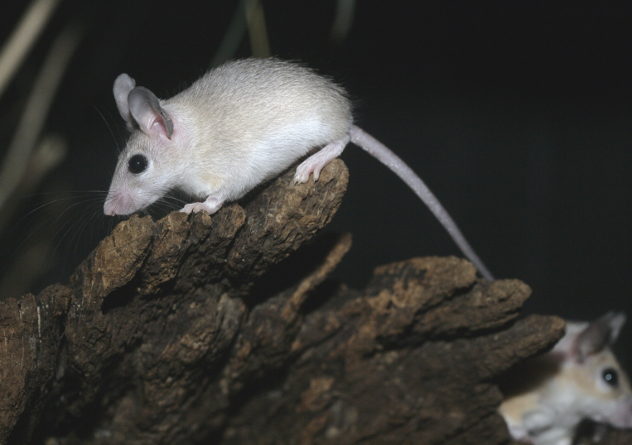
So some animals have tough skin, and some have really thick skin. The African spiny mouse has neither, possessing some of the thinnest skin in the world. Still, this unassuming little rodent possesses one of the most astounding abilities in nature.
The tender epidermis of the African spiny mouse has a high number of hair follicles. With less connective tissue than normal skin, it comes apart pretty easy. It’s 77 percent easier to tear off the skin of a spiny mouse than a regular mouse. Which means two things: First, the spiny mouse has a reliable way to get away from predators. If it gets nabbed, its skin will just peel right off. Second, there’s a researcher somewhere whose job it is to rip the skin off mice.
But is tearaway skin really a good defense? Skin is kind of important, right? Fortunately the African spiny mice have Wolverine’s healing factor. They can regenerate skin, hair follicles, sweat glands, and cartilage in a matter of days, without any scarring. A wound can shrink by 64 percent in one day. So tearing the skin off the African spiny mouse, though disturbing, doesn’t really trouble the rodent in the slightest.
7 Cephalopod Skin Is Made Of Eyes
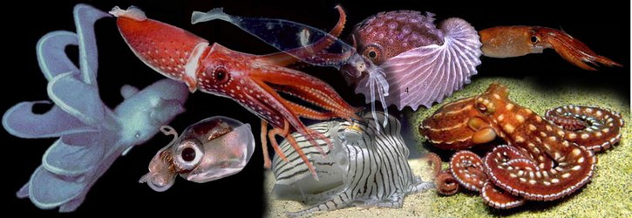
Octopus, cuttlefish and their kin have several amazing adaptations, but probably none so cool or astounding as their skin. We’ve already covered how they can instantly transform their skin to match nearly any background. And we’re not just talking color, but also texture and patterns. No creature on earth can play hide and seek like the squishy critters of the cephalopod family. They literally disappear into the background. And science has no idea how they do this. Sure, researchers have figured out the basic mechanics of how they physically change their color and pattern, but that’s the easy part.
The real question is, how do cephalopods get enough information about their surroundings in order to match them? Especially considering that they’re color-blind. Octopus and cuttlefish can match the color of their backgrounds perfectly even though they themselves cannot see those colors.
It’s a mystery, but new research points to something extraordinary. It is very likely that cephalopods can see with their skin! Opsin is a protein used for photoreception that is found in the eyes of everything that has an eye. From cows, to fruit flies, to jellyfish, to people, we all see because of opsin. Cuttlefish of course have opsin in their eyes too, but they also have it in their skin.
Having light-sensing cells all over their body may well explain how these creatures match their environment so perfectly. If they can see everything all around them, then they can easily match patterns and colors.
And as far-fetched as it sounds, it’s not even the only creature that can see with its whole body. Sea urchins do it too. Some scientists believe that sea urchins can even perceive images from the light-sensing opsin covering their body, even though they are more or less brainless.
6 The Thorny Devil Is A Living Paper Towel
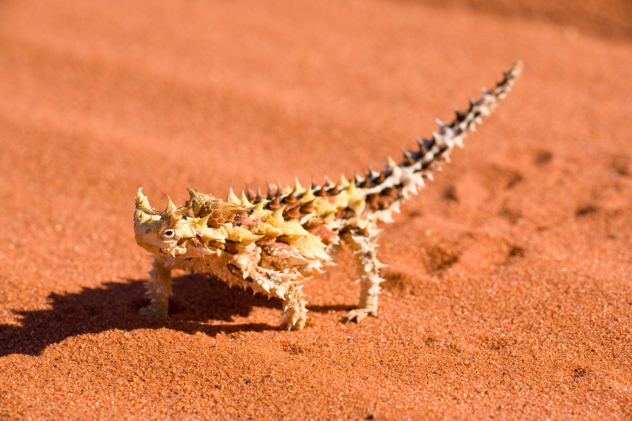
The moloch, also known as the thorny devil, is an odd lizard that looks like a throwback to the dinosaur age. They live in the deserts of Australia, where nobody messes with them because every solid inch of them is covered in wicked looking spikes. The moloch eats only ants and has a number of interesting adaptations and strategies that help it to survive in such a hostile environment. Perhaps none of them is so astounding though as the way they get their liquids.
The thorny devil can drink with its feet—or just about any other part of its body, because their skin is super-hydrophobic. Their cracked, craggy skin is covered in microscopic ravines and valleys designed to “wick up” fluids, basically repelling the water upward. It’s like what happens when you dip the corner of a paper towel in water. The water is absorbed and it climbs up the sheet, apparently in defiance of gravity. The same thing happens with the thorny devil.
Its skin uses capillary action, which is the tendency of liquids to move though narrow spaces because of intermolecular forces. It stores the water in its skin, then, by means that are not entirely understood, utilizes some movement of the jaw or tongue to pump this fluid from pockets on its face into its mouth.
The thorny devil’s entire body is a series of microscopic straws that all lead to the mouth. How would you like to be able to eat soup by standing in it? The moloch has achieved this dream. (Don’t lie: You’ve totally dreamed that.)
5 Giraffes Have a Built-In Air Conditioner

Africa is hot and dry and this presents a considerable challenge to giraffes. To keep cool, lions sleep in the shade, elephants cover themselves with mud and the fat hippos while the day away in the water. Giraffes can’t do any of that. Sometimes they even have trouble finding shade because they’re as tall as many of the trees. So how does the tallest animal on the planet keep cool? Air conditioner skin.
Giraffes actually have a few adaptations for dealing with heat. Like camels, giraffes don’t sweat or pant. They can do it, they just don’t like to. Conserving water is critical for an animal that has to bend over 5.5 meters (15′) into croc-infested waters just to get a drink. So instead they’ll raise their body temperature 3–10 degrees. By staying a few degrees above the surrounding temperature, they never have to sweat.
But even with this flexibility, they have to be able to shed heat somehow, or they’d cook in the sun. And that’s why they have spots. Sure, they’re for camouflage too, but researchers have found out that a giraffe’s spots are also thermal windows.
Around each patch there is a large blood vessel and under it there’s a sophisticated system of smaller ones. A giraffe can send warm blood to these spots, which conduct heat better because they’re dark. Then by orienting themselves into a breeze or out of the worst of the sun they can work the excess heat out of their systems. And having the long narrow neck gives the animal more surface area relative to its mass. That means it has more skin than an animal of similar weight.
They’re able to pump lots of blood to the skin and they have lots and of skin. This heat exchange system allows giraffes to thrive in very arid conditions that would turn the rest of us into a sweaty, stinky mess.
4 Zebra Stripes Confuse Insects

Why do zebras have stripes? To confuse predators, right? A herd full of black and white stripes makes it more difficult to distinguish one animal from the next. Though that sounds good, it’s never been successfully tested. It might still be true, but it’s just a guess.
Military research has shown that it’s harder to judge the speed of a target with highly contrasting colors. Dazzle camouflage, which was used on warships in WWI, often used zebra patterns. So maybe running zebras are heard to chase down. It’s also been shown that zebras all have unique stripes and they use this to recognize each other. There may be quite a few uses for the distinctive black-and-white markings.
But perhaps the most compelling is as an insect repellent. It’s known that flies are less attracted to white coats than they are to darker coats. Horses with light coats are more susceptible to skin cancer and predation than their brown and black kin, but they don’t have to put up with as many bloodsuckers.
New tests have shown that biting insects like horse flies are even less likely to attack a black-and-white pattern, such as that the zebra sports. And since bugs in Africa carry all kinds of terrible diseases, it makes sense to have a good defense. The secret in the stripes has to do with polarized light. Light moves in different directions and some animals, like bugs, can see this polarization. Many insects are attracted to horizontally polarized light for instance, because it’s a telltale sign of water.
The black hide of a horse polarizes light particularly well, whereas white depolarizes light. It’s believed that insects are confused by the alternating pattern of polarized light created by the zebras black and white bars. It’s a chemical-free repellent utilizing an aspect of the light spectrum that most animals can’t even see.
3 Bornean Flat-headed Frogs Have No Lungs
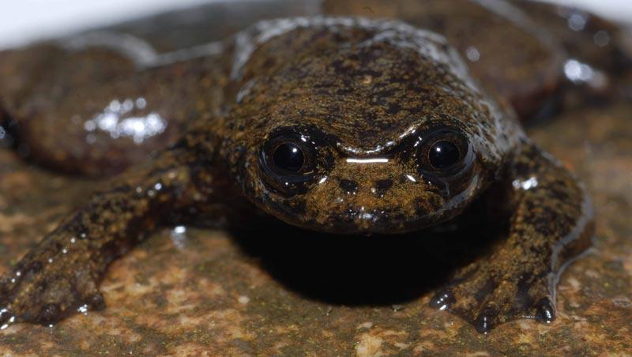
The Bornean flat-headed frog can’t croak or chirp or even hiss. That’s because it has no lungs. Nor does it have any gills. It is one of the few tetrapods on earth that gets all of its oxygen through its skin.
But lungs exist for a reason. Breathing through your skin is not very efficient. Fortunately, these frogs have a low metabolic rate, meaning they don’t do a whole lot to begin with. On top of that, they’re very flat, which gives them a lot of surface area. And of course they live in very cold water, and cold water holds more oxygen (if you don’t believe us just ask a penguin why the fishing in the Arctic is so good).
The rapidly flowing river splashing over rocks creates a white-water fizziness, so there’s plenty of dissolved oxygen for this skin-breathing little guy. As for why they gave up their lungs, researchers can only speculate. It might be that carrying around an air bladder in a swift moving stream will get you swept away. It’s likely an adaptation to a very specific environment.
The bad news is that pollution is killing them off. The good news is they can’t get lung cancer.
2 Chameleons Know What Different Predators See

We’ve covered chameleons and their ability to change color before. Their colors are used for communication between other chameleons, to regulate heat, and as camouflage from predators. But recent research shows that even with this range of uses, chameleons are much more sophisticated than we thought.
When a hungry hunter is nearby they don’t just throw up a green background and hope for the best. Tests on the Smith’s dwarf chameleon (the rarest in the world) show that these innovative reptiles actually alter their camo depending on which predators are around.
Researchers found that when the fiscal shrike (a predatory bird) shows up, the Smith’s dwarf chameleon will fit their color and pattern more closely to the background. And since shrikes have this nasty little habit of impaling their prey on thorns to die a slow horrible death, it’s probably a good idea to get as good a disguise up as possible.
But when a boomslang slithers by, the little lizard doesn’t try nearly as hard. Analysis with a spectrometer showed the reason for this. Despite a lazy disguise, they were still better camouflaged for the snake’s visual system than they were for the bird. That’s because the snake’s vision is relatively poor. Somehow the chameleon knows how its predators see. They don’t waste much energy hiding from the snake, but they go all out for the bird. This is the first time an animal has been shown to employ different types of camouflage depending on who’s looking at it.
1 Green Sea Slugs Learn To Photosynthesize
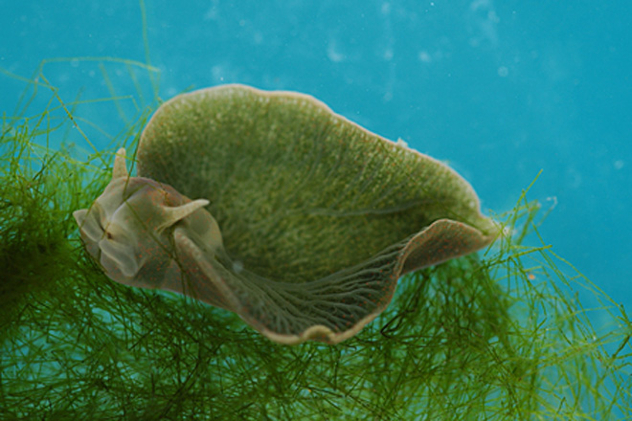
The green sea slug drifts around the shallow shores of the Americas doing a pretty good impersonation of a soggy leaf. A cousin of the humble snail, this aquatic escargot only eats algae. After fueling up the tank on a few good meals, the green sea slug is done . . . like, forever. Thereafter the green sea slug can get all of its energy from the sun, like a plant.
It’s one of the only animals on earth that can photosynthesize. It does this by stripping the tools that the algae uses, the green photosynthetic organelles called chloroplasts, and storing them in its skin cells. It steals from algae so that it can become solar-powered. That’s pretty amazing, but eventually the chlorophyll in these structures will run out.
Fortunately the green sea slug can simply produce more. It should be impossible. Scientists don’t really understand it, but somehow the green sea slug has managed to incorporate enough of the algae’s DNA into itself that it can produce chlorophyll.
Once the slug has some chloroplasts to hold its chlorophyll, it can live on sunlight alone. It doesn’t eat or produce any waste after that. That would be like us gorging at a salad bar, then never needing to buy food or toilet paper ever again.
Monte Richard writes for Cracked.com or you can check out his blog at thelastmonte.wordpress.com







